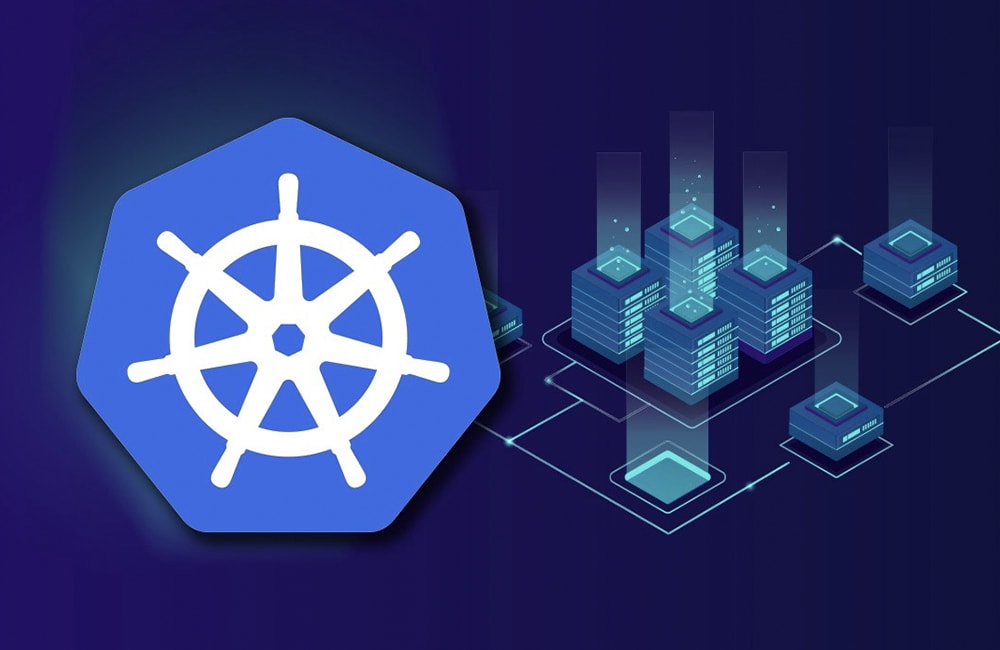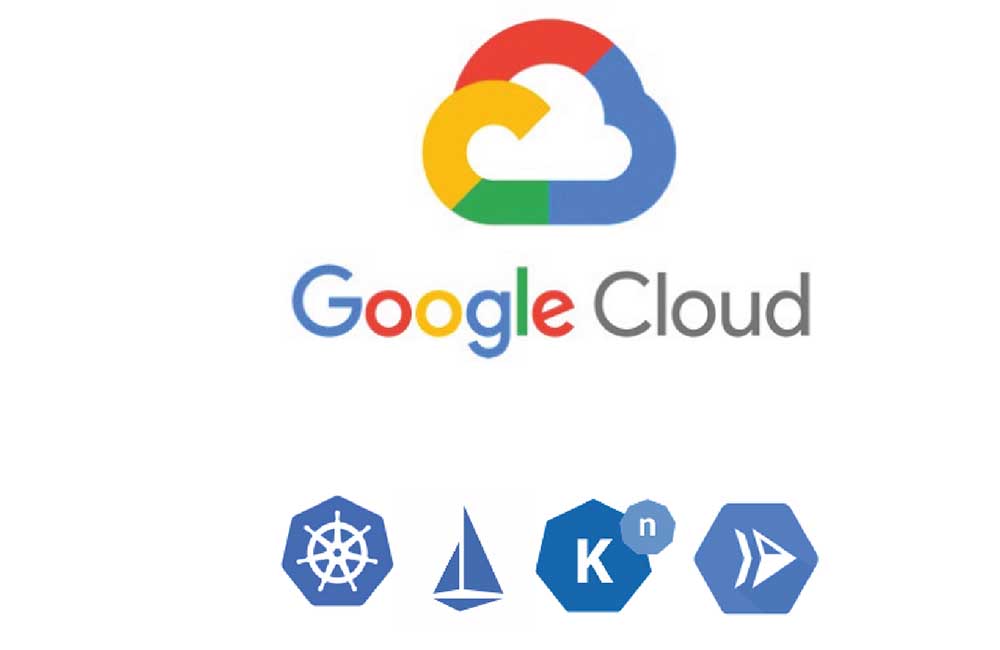
Kubernetes, the container clustering tool developed by Google and made open source in 2014, has opened the door to a new era for developers at a time when cloud platforms are becoming widespread. In this article, after a brief look at the history of the deployment process, we will try to answer the questions of what is Kubernetes and what does Kubernetes do by entering the container world.

Google, a pioneer in the development of Internet technologies, began using a new method in its application development and deployment processes in the early 2000s, taking an approach to creating scalable software architectures that made traditional deployment processes much easier. Borg, who is also considered the ancestor of Kubernetes, which we will discuss in this article, emerged as a cluster manager running hundreds of thousands of workloads from thousands of different applications in a series of clusters with tens of thousands of machines each. This structure, which Google’s systems ran on for many years, was open sourced to all developers in 2014 under the name Kubernetes and has been supported by the Cloud Native Computing Foundation since then. Before we look for an answer to the question of what is Kubernetes as global IT, let’s talk a little bit about container technology and the brief history of distribution that will make it easier to approach these concepts.
What is a container?
Containers, or containers, are software packages that contain all the elements necessary to work in any environment. Containers, which are tasked with virtualizing the operating system in an application, can run on cloud platforms, in a private data center or anywhere from a developer’s laptop. To clarify a little more, every query and action you make on Google Search or YouTube reaches you by working on these containers. The concept of containers, which serves to separate comprehensive workloads and application architectures into independent building blocks and forms the basis of the microarchitecture approach, allows developers to move quickly in development and deployment processes and work on very large-scale systems.
To understand large-scale systems, let’s think about YouTube. On YouTube, every feature from search queries to video player, from commenting to community pages, means thousands of lines of code and hundreds of actions taken at the same time. When the use of platforms expands and the number of users increases, the scale of the application also increases, and at this point, developers need more agile intervention strategies and development processes. This is where the container comes in.
A brief history of the deployment process
In general, we can examine the deployment processes in three stages: traditional, virtualized and container:
Traditional deployment era: In the early days of the Internet and the absence of cloud technologies, organizations ran their applications on physical servers. However, if multiple applications were running on physical servers, the applications were experiencing performance problems. This was a barrier to scaling of growing digital products and applications.
Virtualized deployment era: This stage saw the emergence of virtualization technology, which resulted in multiple virtual machines (virtual machine | VM) has started to run. But as applications grew and systems became comprehensive and complex, this method became insufficient.
Container deployment era: Containers introduced a system where VMs could more easily share the operating system between applications. The containers, which contain their own file system, processor share, processing space and memory, stood out with their ability to be separated over the underlying infrastructure. This concept, which allows a more agile method in application creation and deployment processes, has started to be adopted because it has continuous development, integration and deployment opportunities.
What is Kubernetes, what does it do?
Kubernetes is a platform for managing container workloads and services that simplifies automation and takes its name from the Greek word meaning “captain” or “pilot.” We mentioned that Kubernetes, also known by the acronym K8s, is presented in an open-source format as a more advanced version of Borg developed by Google.
Kubernetes enables seamless management of containers, providing one of the best ways to package and run applications today, providing developers with:
Load balancing: In advanced applications, some workloads require more performance and drive higher traffic. Kubernetes provides the ability to share these workloads across containers, distribute network traffic, and expose high-traffic containers to ensure system stability.
Storage advantages: Kubernetes can automatically connect to the selected storage system, whether it’s local storage appliances or cloud systems.
Automation: Kubernetes, which offers more control over the deployment processes of updates and developments, is used to automate processes such as creating new containers in case of deployment, deleting existing containers and adapting all resources to the new container.
Packaging: If you specify how much processing power and memory each container needs, Kubernetes can plan to make the most of the resources.
Self-healing: Kubernetes, which can restart the container to eliminate the problem of a container running an important workload, and replaces the containers when necessary, automatically protects your applications from interruptions.
Security: Kubernetes also makes it possible to store and manage sensitive information such as passwords.
How to use Kubernetes in the e-commerce and retail industries
Considering the e-commerce and retail sectors, consumer habits, industry trends are evolving day by day, and there is an era in which companies must always offer more to their customers and stakeholders. Although the interfaces are simple, the operations performed in the background, the queries made, the functions expected from online platforms are becoming increasingly complex. On the other hand, businesses need to better evaluate the data they get from their customers and stakeholders and turn it into consistent insights.
All this brings the concept of digital transformation to the agenda. Gartner predicts that 70% of customer interactions will be managed by and executed on intelligent systems this year, while the International Data Corporation (IDC) predicts that 65% of the global economy will be digitalized by the end of this year. As business processes move to cloud platforms, both the front office, the source of main revenue and the center of customer interaction, and the back office, where value-added products are developed, use digital more. This requires more extensive applications, and this is where Kubernetes offers businesses the key to the digital transformation they desire. Companies that take consistent steps towards digitalization are surely in touch with the ease that Kubernetes provides in their application development and deployment processes.
Let’s illustrate how La Redoute, an e-commerce brand, is using Kubernetes to transform its business by illustrating a case study published in the Cloud Native Computing Foundation. A brand that was on the verge of bankruptcy in 2014 and realized the fact that it was turning to digital transformation at that time, serves more than 10 million customers today with its Kubernetes infrastructure. The time between deciding on a project or feature and going into production is reduced from days to 10 minutes. The number of distributions increases by 100% from 40 to 80. While it used to take weeks for the brand to create new services and make them available to its customers, today it can be realized in minutes.
Kubernetes, which has become one of the indispensables of the developer community today, is a solution that carries Google’s experience of more than 15 years. Global IT, which is the first brand that comes to mind when it comes to Google Cloud in Turkey, is the oldest and the only end-to-end Google Cloud Business Partner in Turkey, and we provide all the services offered by Google and the solution ecosystem with its 15 years of experience. We help businesses in the retail and e-commerce industries take their performance and customer satisfaction a step further with Google Cloud services powered by Kubernetes.
